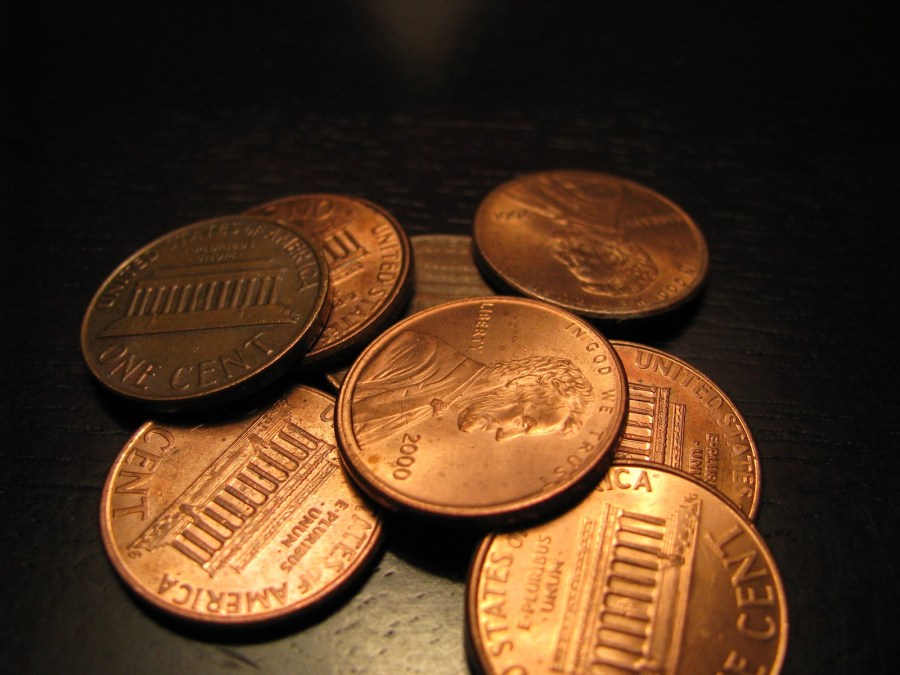How Much Do 100 Pennies Weigh?

A Lincoln-faced penny made after 1982 weighs 2.5 grams. So, 100 of these coins weigh 25 grams. That’s about 8.8 ounces or .55 pounds. However, pennies minted between 1909 and 1982 and modern Union Shield-backed pennies weigh 3.11 grams each. That’s almost 11 ounces or .68 pounds for 100. The only exception to this are wheat pennies made in 1943. They weigh 2.7 ounces each. That’s 9.5 ounces or .59 pounds for 100.
Kinds of Penny
The two kinds of penny in production today are the
Lincoln Penny and the Union Shield. The former is made from brass (95 percent copper, 5 percent zinc), while the latter is copper-plated zinc (97.5 percent zinc, 2.5 percent copper). Before that, pennies were made from mostly copper starting in 1944 and weighed 3.11 grams or .11 ounces.
The first pennies made in 1793 were 100 percent copper and weighed 13.48 grams, or .475 ounces. These pennies were soon cut down to 10.89 grams or .384 ounces from 1795 to 1857. Between 1856 and 1864, 12 percent copper was added to pennies, making them weigh 4.67 grams or .164 ounces. Pennies from 1864 to 1942 were made from 95 percent copper plus 5 percent zinc and tin and weighed 3.11 grams or .11 ounces. Pennies made in 1943 were made from zinc-coated steel to free up copper for the armed forces during World War II.
While other kinds of penny do exist, these are the most common.
The Value of a Penny
As the price of copper increases, the raw metal in pennies becomes more valuable than the penny itself. As of 2019, the copper in a pre-1982 penny is worth about 1.7 cents, 70 percent more than what the U.S. government says it’s worth.
Zinc is a different story. The amount of zinc in a post-1982 penny is only worth .6 cents as of 2019.
Pressing Pennies
Many theme parks and other tourist attractions have machines for pressing pennies into novelty shapes. Some people collect these elongated coins, and they usually prefer pre-1982 copper cents to copper-plated zinc pennies. This is because the coin press often scratches the copper plating, revealing the zinc beneath, and zinc pennies require extra attention when cleaning. However, other collectors prefer pennies to be pressed the same year they’re made.
Pennies with Mistakes Are Valuable
Many rare coins are the result of mistakes made at the mint. While most pennies produced in 1943 were zinc-coated steel,
a few were accidentally made with copper. Only 15 to 20 are held by collectors today, although more may exist. These pennies often sell for $150,000 to $200,000.
Other examples include pennies with letters spaced too close or too far apart and pennies with one side printed more than once, leading to a slightly distorted image. The latter are called double die pennies.
The Most Valuable Penny
The most valuable penny is a prototype coin made before pennies were available to the American public at large. Known as the Birch cent, one of these coins sold at an auction in 2015 for $2.6 million. That’s the most money ever spent for a penny.





